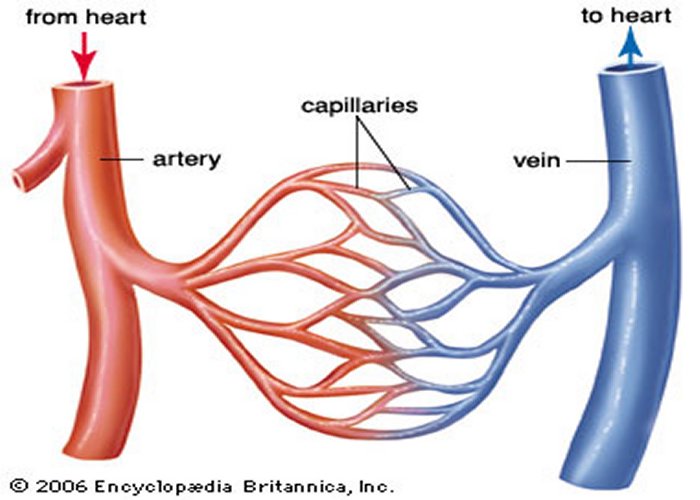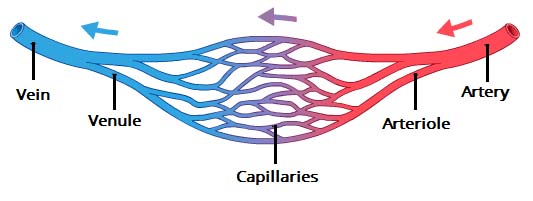What are the three main types of vessels in the circulatory system?
1 Answer
Arteries, capillaries, and veins.
Explanation:
The body's circulatory system comprises the heart and three types of vessels: arteries, capillaries, and veins.
Arteries are tubes or vessels with strong muscular lining that carry blood away from the heart towards different parts of the body. Along with the heart's pumping, the muscular contractions of the arteries enables a steady and regulated blood flow. As arteries proceed, they subdivide into finer arterioles that connect with capillaries
Capillaries are fine tubules or vessels that connect arterioles with venules. They have a very small diameter and have thin walls (a one cell thick endothelium) to facilitate the passage of oxygen, water, carbon dioxide, and other nutrients and waste between the tissues and the blood stream. They are present in every tissue and organ and have higher concentrations in those organs and tissues that are more metabolically active.
Veins are the tubes or vessels that convey blood back to the heart. They are connected to capillaries by venules which are finer subdivisions of veins. They are less muscular than arteries and generally lie closer to the skin. To prevent back flow of blood, veins are provided with valves which allow blood flow in a single direction only.
 http://www.messagetoeagle.com/wp-content/uploads/2016/03/humanbloodvessels111jpg
http://www.messagetoeagle.com/wp-content/uploads/2016/03/humanbloodvessels111jpg
 http://teachmeanatomy.info/wp-content/uploads/Overview-of-Blood-Circulation.jpg
http://teachmeanatomy.info/wp-content/uploads/Overview-of-Blood-Circulation.jpg
